Have you ever found yourself stuck in your kayak, and wondering, “How to get out of a kayak?” You’re not alone! Many paddlers have experienced the awkwardness of trying to exit a kayak gracefully. It’s a common struggle. But the good news is, it doesn’t have to be a hassle.
In this blog post, we’ll tackle the struggle of getting out of a kayak. Knowing the proper techniques can make all the difference in kayaking. We’ll guide you through the steps, tips, and tricks to ensure you can exit your kayak smoothly and safely every time.
By the end of this read, you’ll not only feel more confident about getting out of your kayak but also understand why it’s crucial to learn these techniques. You’ll be hopping out of your kayak like a pro with a bit of practice.
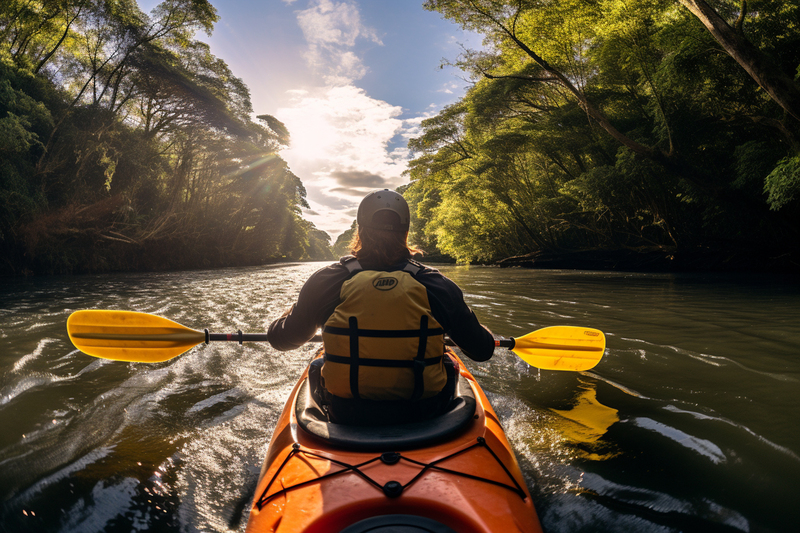
Understanding the Basics of Kayak Exits
Getting out of a kayak can be more challenging than it seems. The confined space, the instability of the kayak, and sometimes even the weather conditions can all add to the difficulty. But why is it so tricky?
First, practice makes perfect. Familiarizing yourself with your kayak’s movements and balance points is essential. Spend some time practicing in a safe environment before you venture into more challenging waters.
Second, the type of kayak you use plays a significant role in how you exit. Sit-in kayaks and sit-on-top kayaks require different techniques. Sit-in kayaks can make you feel more secure but exiting can be a bit tougher due to the enclosed space. Sit-on-top kayaks are generally easier to get out of but can feel less stable.
Preparing for a Smooth Exit
To ensure a smooth and safe exit, preparation is key. Here are some steps to help you get started:
- Choosing the Right Location: Aim for calm waters and shallow areas when you’re practicing your exits. The more stable the environment, the easier it will be for you to get out of your kayak without any mishaps.
- Wearing the Right Gear: Always wear a life jacket, even if you’re in shallow water. Proper footwear is also crucial to prevent slips and provide a good grip as you exit the kayak.
- Checking Kayak Stability: Before you attempt to get out, ensure your kayak is stable. This can involve positioning your paddle correctly or even using it to steady yourself.
By preparing adequately and practicing regularly, you’ll find that getting out of your kayak becomes second nature. These initial steps lay the foundation for more advanced techniques and a safer paddling experience.
Ready to dive into the specifics? In the next section, we’ll provide a step-by-step guide on how to get out of a kayak, covering both sit-in and sit-on-top kayaks. Let’s make those kayak exits smooth and stress-free!
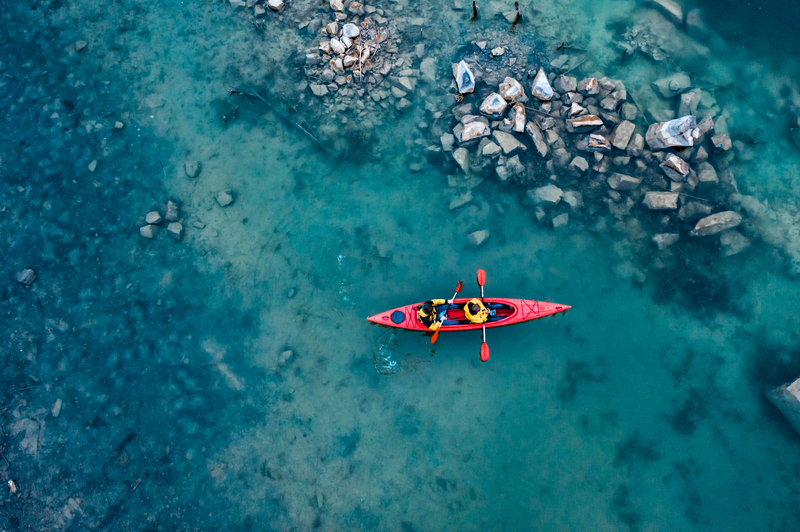
Step-by-Step Guide: How to Get Out of a Kayak
Let’s dive into the specifics of how to get out of a kayak, whether you have a sit-in or sit-on-top model. We’ll also cover tips for exiting your kayak both on land and in water. This will ensure you have all the information you need for a smooth and safe exit.
Detailed Step-by-Step Instructions for Sit-In Kayaks
1. Positioning Your Paddle for Stability: Place your paddle perpendicular to the kayak, right behind your seat. This will act as a brace, helping to stabilize the kayak as you prepare to exit.
2. Moving to the Edge of the Kayak: Slowly slide your body towards the edge of the cockpit. Keep your hands on the paddle for added balance and control.
3. Swinging Your Legs Out and Standing Up: Gently swing one leg out of the kayak and plant your foot firmly on the ground or the shallow water bed. Once you’re stable, swing the other leg out and stand up slowly, using the paddle for support to maintain your balance.
Detailed Step-by-Step Instructions for Sit-On-Top Kayaks
1. Positioning Your Paddle for Support: Place your paddle across the kayak, just behind your seat. This will provide a stable base as you prepare to exit.
2. Shifting Your Weight to the Side: Lean slightly to one side, using the paddle for stability. This helps maintain balance and prevents the kayak from tipping over.
3. Sliding Off the Kayak Gracefully: Slide your legs off the kayak one at a time, letting your body follow. Aim to land on your feet if the water is shallow, or slide gently into the water if it’s deeper. The paddle will help keep the kayak steady as you exit.
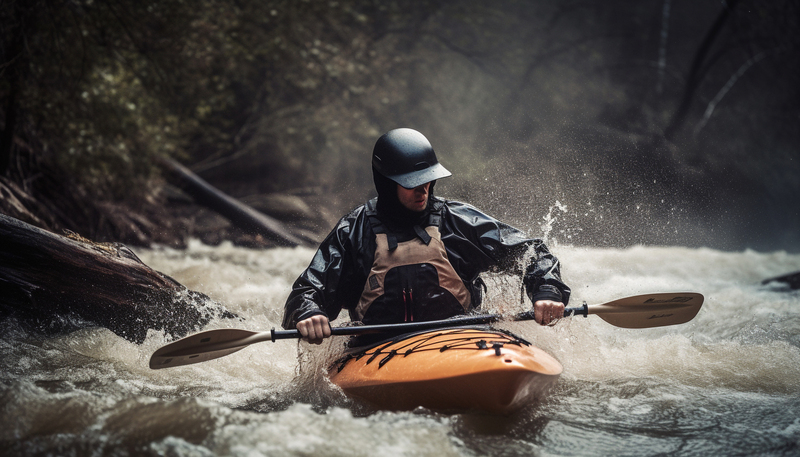
Tips for Getting Out of a Kayak on Land
1. How to Approach the Shore Correctly: Paddle towards the shore at a shallow angle to avoid running aground too quickly. This gives you more control as you approach land.
2. Techniques for Exiting When the Kayak is on a Beach or Bank: Once you’re close enough, use your paddle to stabilize the kayak. Swing your legs over the side and step out onto the beach or bank. If the kayak is on a slope, exit from the higher side to avoid tipping over.
3. Safety Tips to Avoid Slipping or Falling: Be mindful of slippery rocks or mud. Move slowly and deliberately, keeping a low center of gravity. Wearing proper footwear can prevent slips and provide better traction.

Tips for Getting Out of a Kayak in Water
1. Exiting in Shallow Water: Techniques and Precautions: Paddle into shallow water where you can touch the bottom. Use your paddle to stabilize the kayak, swing your legs over the side, and stand up slowly. Keep the kayak steady with one hand as you step out.
2. Exiting in Deep Water: How to Stay Afloat and Secure Your Kayak: If you’re in deep water, use a paddle float for additional buoyancy. Attach the paddle float to your paddle, use it to stabilize the kayak, and slide out into the water. Hold onto the kayak to stay afloat and secure it.
3. Using a Paddle Float for Additional Support: A paddle float can be a lifesaver in deep water. Inflate the float, attach it to your paddle, and use the paddle as an outrigger to stabilize the kayak as you exit.
Feeling more confident about your kayak exit skills? Great! Next, let’s explore common mistakes paddlers make and how to avoid them, ensuring your exits are always safe and smooth. Stay tuned for some practical tips and advice!
Common Mistakes and How to Avoid Them
As you practice how to get out of a kayak, it’s crucial to be aware of common mistakes that can lead to frustration or even accidents. Here’s what to watch out for and how to avoid these pitfalls.
Rushing the Process: Why Taking Your Time is Crucial
One of the biggest mistakes is rushing to get out of your kayak. Whether you’re excited to reach the shore or eager to stretch your legs, haste can lead to mishaps.
- Take Your Time: Moving slowly and deliberately ensures you maintain control and balance. Make each movement with purpose to avoid tipping over or losing your footing.
- Stay Calm: If you feel anxious, take a few deep breaths before you start the process. A calm mind helps you make better decisions and move more efficiently.
Ignoring Balance and Stability: Maintaining Control of Your Kayak
Kayaks can be tippy, especially when you’re trying to get out. Ignoring balance and stability can easily lead to a spill.
- Use Your Paddle: As mentioned earlier, your paddle is a great tool for stability. Use it to brace yourself and keep the kayak steady.
- Shift Your Weight Gradually: Avoid sudden movements. Shift your weight slowly and steadily to maintain balance.
Failing to Practice: Importance of Rehearsing the Exit Techniques
Practice is key to mastering any skill, including getting out of a kayak. Skipping this step can leave you unprepared when you’re out on the water.
- Rehearse Regularly: Spend time practicing your exit techniques in a safe environment. The more you practice, the more confident and efficient you’ll become.
- Simulate Different Scenarios: Practice exiting on land, in shallow water, and in deeper water. Being prepared for various situations will boost your confidence and skills.
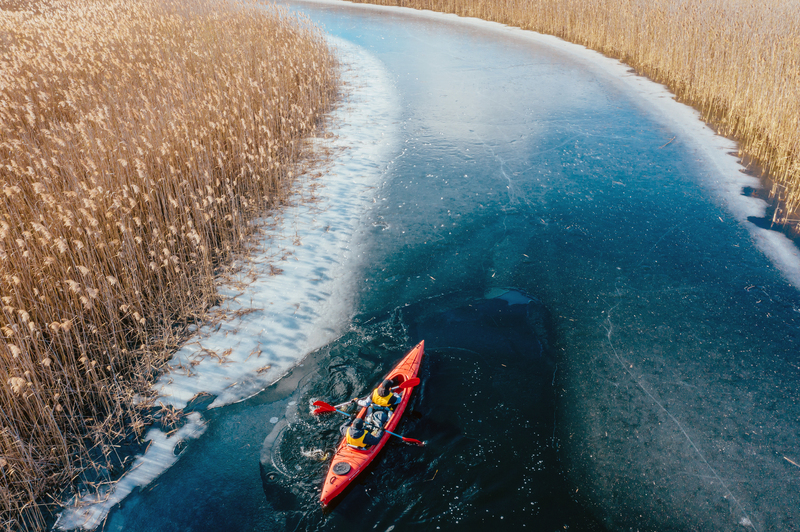
Advanced Techniques for Experienced Paddlers
Ready to take your kayaking skills up a notch? Let’s explore some advanced techniques and essential safety practices that seasoned paddlers swear by.
Wet Exit: What It Is and How to Perform It Safely
A wet exit is a critical skill for kayakers, especially in rough waters or unexpected situations.
- Stay Calm: If your kayak flips, staying calm is your first priority. Remain focused and collected.
- Release the Spray Skirt: If you’re in a sit-in kayak, locate and pull the release handle of your spray skirt to free yourself.
- Exit Safely: Push yourself out of the kayak and swim to the surface. Practice this maneuver in controlled environments to build confidence and muscle memory.
Eskimo Roll: An Introduction and When It’s Necessary
The Eskimo roll is an advanced technique used to right your kayak without exiting.
- Learn from Experts: Seek guidance from experienced instructors to learn this complex maneuver properly.
- Practice Makes Perfect: Mastering the Eskimo roll takes time and persistence. Start in calm waters and gradually work your way up to more challenging conditions.
Self-Rescue Methods: Getting Back into Your Kayak After an Exit
Knowing how to re-enter your kayak after a spill is crucial for maintaining control and safety.
- Use a Paddle Float: Attach a paddle float to your paddle for added stability in deep water.
- Climb Back In: Position your paddle horizontally across the kayak and use it as an outrigger. With steady movements, pull yourself back into the cockpit.
Safety Precautions and Best Practices
Safety should always come first when kayaking. Here are some essential precautions to keep in mind.
- Paddle with a Buddy: Always paddle with a companion or inform someone trustworthy of your plans and expected return time.
- Equipment Check: Regularly inspect your kayak, paddle, and safety gear for any signs of wear or damage.
- Emergency Preparedness: Keep a well-stocked first aid kit and emergency contact information easily accessible on every trip.
Conclusion
Congratulations on mastering the art of getting out of a kayak! You’ve learned essential techniques, from basic exits to advanced maneuvers like the wet exit and Eskimo roll. By now, you understand the importance of practicing regularly and staying calm in challenging situations.
Remember, kayaking is not just about the paddling; it’s about enjoying nature, exploring new waters, and embracing the thrill of adventure. Whether you’re a beginner or an experienced paddler, safety should always be your top priority. Paddle with a buddy, check your equipment diligently, and be prepared for the unexpected with a well-stocked first aid kit.
As you continue your kayaking journey, share your experiences and learn from others in the vibrant kayaking community. Your stories and tips can inspire and guide fellow paddlers to navigate their own waters with confidence.
Don’t forget to subscribe to our blog for more kayak tips, gear reviews, and exciting adventures. Join us in celebrating the joy of kayaking and the beauty of the great outdoors.
Happy paddling and see you on the water!
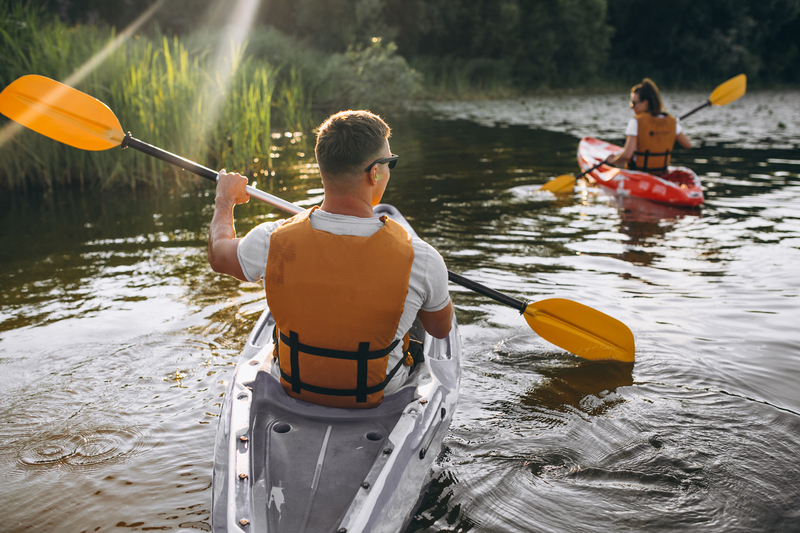
FAQs: How to Get Out Of a Kayak
What are the essential steps for getting out of a kayak safely?
To exit a kayak safely, position your paddle for stability, move to the edge of the kayak, and carefully exit while maintaining balance.
How do you get out of a kayak in deep water?
When exiting a kayak in deep water, use a paddle float for stability, slide out of the kayak, and ensure it remains upright.
What’s the difference between getting out of a sit-in kayak versus a sit-on-top kayak?
Getting out of a sit-in kayak involves sliding out of the cockpit, while in a sit-on-top kayak, you slide off the side into the water.
Can I get out of a kayak without flipping it over?
Yes, you can exit a kayak without flipping it over by maintaining balance and using your paddle for stability.
How do you exit a kayak if it flips over in the water?
If your kayak flips, practice a wet exit by releasing the spray skirt and exiting the kayak, then swimming to the surface.
What safety gear should I always have when kayaking?
Essential safety gear includes a life jacket, whistle, first aid kit, and navigation tools.
Should I wear specific footwear when getting out of a kayak?
Yes, wearing water shoes or sandals with good grip can prevent slipping and provide better traction.
How often should I practice kayak exits?
Regular practice is recommended to build confidence and muscle memory for safe kayak exits.
Views: 0


